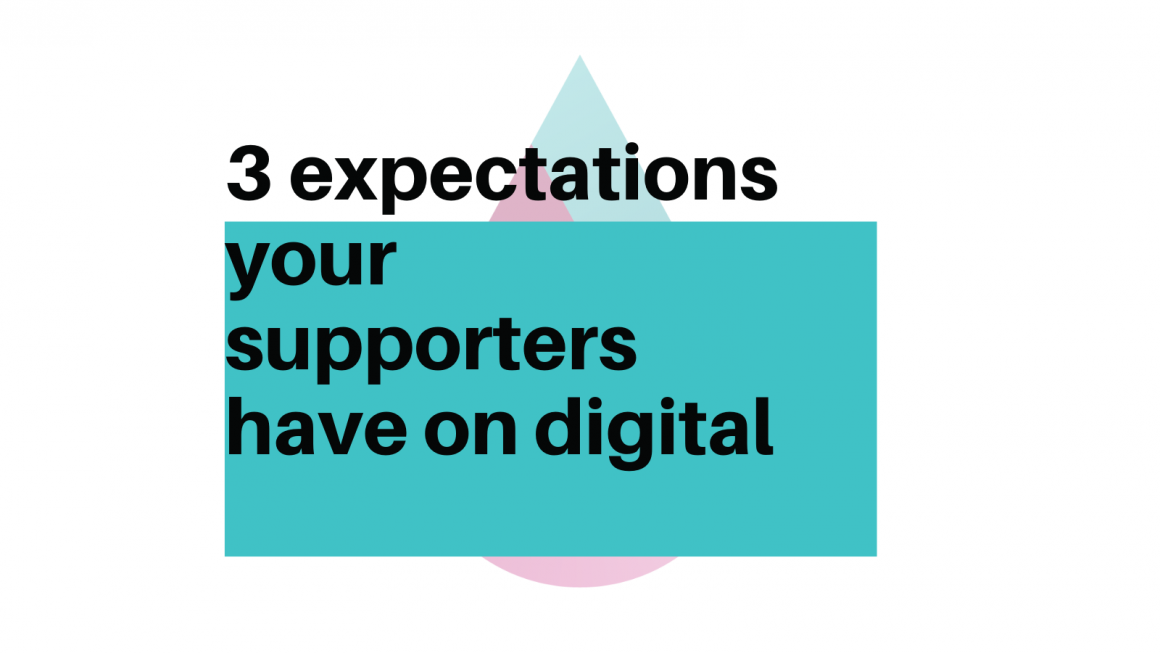During the pandemic, the importance of digital communications with supporters has become clearer than ever. But, while Covid and its associated challenges have seen charities of all shapes and sizes ramp up its use, for a significant proportion – 40% in a recent Charity Digital Skills Report– the circumstances have meant it’s happened faster than perhaps they were prepared for.
As a result, many are still finding their way. And a big challenge for charities in this position is competing with expectations set by the consumer sector, which has been successfully using digital for some years. Today, people – especially those important younger audiences – are used to the fast, smooth, and personalised experiences provided by those organisations. This means they’ll be looking for the same experience from your charity.
Here are the 3 key things supporters expect from your digital communications.
Slick service
Anyone who shops with a consumer brand, whether it’s ASOS or John Lewis, will find their experience different from that of their friends and family. The messaging in all communications will be very much focused on what that brand knows about them, creating a personalised experience that’s relevant to them – their interests, needs and aspirations. This will be carried through every channel, including digital.
For a charity, providing this level of service means tailoring your digital content to your audience based on where they are on their journey with you, and what you know about them as a supporter.
It means integrating your digital activity with the other channels in your mix so it’s a seamless part of your supporter journey. Also, continually monitoring and analysing for insight and understanding of who your supporters are, what they need from you and how they are engaging with you. And managing timely and relevant messaging to them through your communications.
The personal touch
Having supporters that believe in what you do and engage with your work is a great gift. It’s important to remember that because people often feel very invested and emotionally connected with the charities they support, they expect a genuine relationship with you in return.
This means that simply sending out generic messaging every month or so won’t cut the mustard. We know that regular donations drop off when there is little real follow up with supporters.
Personalisation can be hugely sophisticated with masses of data and algorithms at play, but it doesn’t have to be overly complex. A great starting point is to group your supporters by what you know; segment your database for different messaging based on their demographics, activity, and interests.
For example, it could be a group of supporters who have all responded to a special appeal, connected with a local community project, or bought a specific product. Build on this and before long you will that see greater personalised can lead to increased engagement and reduced attrition rates.
Engaging content
We must remember that people have a finite amount of disposable income, and charities are competing against retail, entertainment, travel, and recreational spending of all kinds, most of which offer an immediate return for their money.
And, while people enjoy the feel-good factor when they do something good or help others, this can be fleeting, often lasting only a short time around the decision to give. If we are asking for and aiming for long-term regular donations, particularly during a time of increased cost of living, we must help our supporters continue to feel good.
It’s essential that your content shows them why your work is important, the positive impact their donations are achieving, and perhaps how else they can help beyond a monetary gift – a sponsored event, charity shopping, donating items, or their valuable time as a volunteer.
In addition, supporters often want to feel that they’re part of something, and this can be important in their continued commitment to you. Big consumer brands are great at building brand loyalty, often using social media groups and chatrooms. Supporters respond well to these too and emulating such familiar and expected ways to interact will help to maintain engagement and ensure your cause remains relevant in their eyes.
There’s no doubt digital has become an essential channel for both expanding reach and engaging people, including those sought-after younger audiences who are fiercely charitable and vocal in their support of the causes they care about. Expectations may be high, but it’s possible to meet them and grasp the opportunity to build loyal and long-lasting support for your cause.

